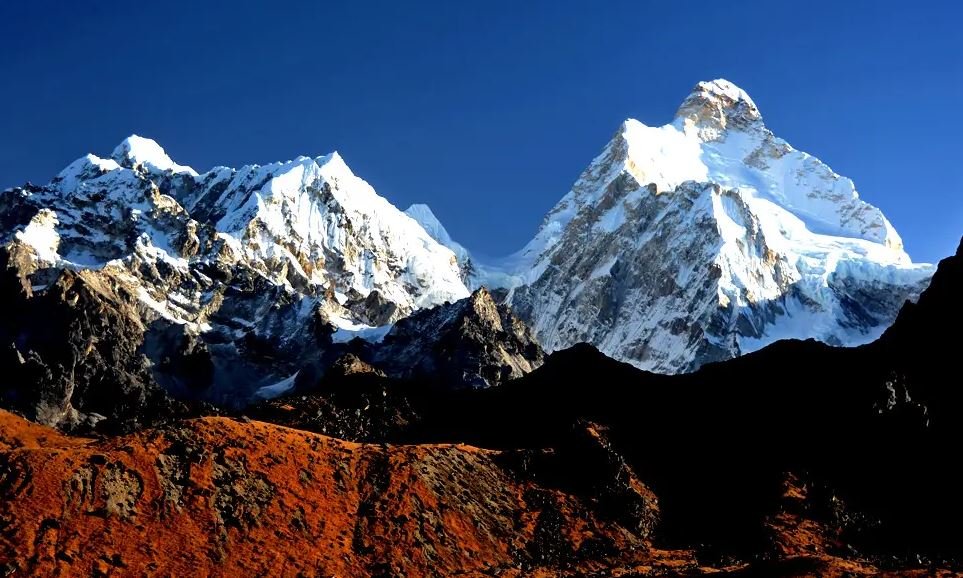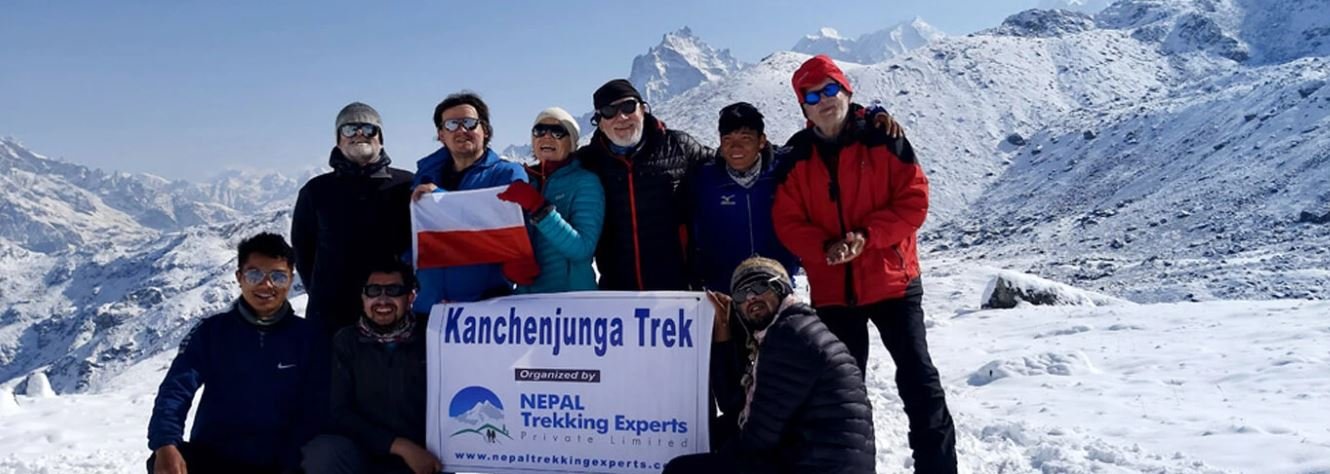Table of Contents
Are you ready for your next trekking destination, the Kanchenjunga Circuit Trek? The unforgettable adventure takes you through one of the most pristine regions of the Kanchenjunga area, along the world’s third-highest mountain, Mount Kanchenjunga. The blend of unparalleled views, diverse landscapes, and enriching cultural experiences makes this trek worth a visit. But you may have a question: Which season is the best time to trek Kanchenjunga?
Well, each season has its charm in this remarkable place. Let’s spill the tea for you and find out the best time to visit the Kanchenjunga Circuit Trek.
Overview of Kanchenjunga Circuit Trek
The Kanchenjunga Circuit Trek is one of the untrodden gems of the eastern region of Nepal, and it takes you through the journey of the north and south base camps of Kanchenjunga. It allows for exploring the beauty of the Himalayas, with diverse landscapes ranging from lush forests to high alpine meadows. At the same time, the culturally enriching experience passes through various traditional villages where trekkers can interact with local ethnic groups such as the Lepchas, Sherpas, Tamangs, Rai, and Limbu.

The trail starts after the alluring flight from Kathmandu to Bhadrapur, followed by a drive to Taplejung. The route winds through the pine and oak forests while crossing the Mewa Khola. Additionally, after crossing several suspension bridges, you make a stop at the villages of Mitlung, Ghunsa, which offer unique cultural insights. From Ghunsa, the trail ascends to higher altitudes that lead to the Kanchenjunga North Base Camp at Pang Pema.
The terrain passes through the Kanchenjunga Conservation Area, another major attraction. It is home to rare flora and fauna like red pandas, snow leopards, musk deer, and Himalayan black bears.
The 360-degree views of towering peaks, such as Kanchenjunga, Jannu, Rathong, Kumbhakarna, Everest, Makalu, and Kambachen, are awe-inspiring. With an immersive cultural experience, traditional Tibetan Buddhist villages like Ghunsa, where colorful prayer flags and ancient gompas are common sights.
However, the terrain is one of the most challenging treks in Nepal due to its remote location, high altitudes, and physical demands. Proper acclimatization and preparation are crucial, as the trek involves significant altitude gains and potentially harsh weather conditions.
Factors Influencing the Best Time to Trek Kanchenjunga Circuit
| Factors Influencing the Best Time to Trek | Description |
| Weather Conditions | Favorable weather ensures clear skies, better visibility of mountains, enjoyable journey, and overall safety. The best seasons avoid monsoons and harsh winters. |
| Temperature Variations | Understanding temperature ranges helps in preparing for both daytime warmth and nighttime cold, ensuring comfort and safety. |
| Rainfall and Snow | Avoiding seasons with heavy rainfall prevents slippery trails and leech infestations, while knowing snow patterns helps avoid blocked or dangerous paths. |
| Trail Conditions | Trails are safer and more navigable during dry seasons. Snow-free trails and stable paths reduce the risk of accidents and make the trek more enjoyable. |
Best Seasons for Kanchenjunga Circuit Trek
Spring (March to May)
Spring is renowned as one of the most favored seasons for trekking, and for good reason. During this time, nature adorns the landscape with a beautiful canvas featuring clear skies and breathtaking views of the towering peaks. The trail comes alive with blooming flora that adds to the enchanting scenery and makes every sight along the way truly breathtaking.
In addition, the Kanchenjunga region experiences daytime temperatures ranging from 10°C and 25°C, while nighttime temperatures fall between 0°C and -15°C. The mild and pleasant weather sets the perfect stage for the highlights of the Kanchenjunga Trek.
The scent of the rhododendron flowers, combined with the breathtaking views of the Kanchenjunga ranges, creates an awe-inspiring moment for trekkers. With longer daylight hours, there’s ample time for exploration and soaking in the natural beauty of the surroundings.
However, it’s essential to note that spring is the peak season for trekking in this region, so you may encounter overcrowding on the trail. Additionally, towards the end of spring, the onset of the monsoon season can bring wet and slippery trail condition
Autumn (September to November)
Yet another of the best seasons for trekking in the Kanchenjunga region is autumn. Following the monsoon season, the weather becomes stable, with clear blue skies and beautiful panoramic views of the peaks. Autumn transforms the landscape with a magical display of colors. The forests and hillsides come alive with red, orange, and green leaves, creating a soulful experience for trekkers.
During this season, daytime temperatures range from 1°C to 20°C, while nighttime temperatures range from 0°C to -15°C. Besides, autumn is also a time for festivals, like Yartung, Dashain, and Tihar, with the rich cultural experience of the local people.
However, because this is one of the best times of the year for trekking, you may encounter overcrowding on the trails. The team from Nepal Trekking Experts suggests visiting in mid-September or late November to make your journey through this majestic region even more magical.
Off-Season for Kanchenjunga Circuit Trek
Winter (December to February)
Winter brings whimsical magic to the Kanchenjunga region. The peaks will be covered by snow, creating a perfect, picturesque backdrop. The sight is breathtakingly beautiful.
However, the season is harsh, with daytime temperatures ranging from -3°C to 10°C and nighttime temperatures between -20°C and 0°C. These cold conditions result in snowdrifts and icy patches that make the trails treacherous and slippery. Additionally, the limited availability of teahouses and lodges makes the trek more challenging. Consequently, winter trekking in this region requires significant preparation and resilience. Since Kanchenjunga Circuit Treks lead over the high passes and the north and south base camps, Nepal Trekking Experts do not recommend this trek in the winter.
Monsoon (June to August)
Monsoon season, right after the spring, is the off-season for trekking in the Kanchenjunga region. The heavy rainfall creates muddy and slippery trails and makes navigation difficult. The increased risk of landslides and trail disruptions requires you to stay updated on weather conditions and be prepared for possible diversions or delays.
During this time, daytime temperatures range from 11°C to 25°C, while nighttime temperatures range from 5°C to 15°C. Additionally, monsoon clouds may obscure the mountain views, limiting panoramic vistas and photo opportunities.
It would be better if you chose trekking in rain shadow areas like Nar Phu Valley Trek, Upper Dolpo Trek, and Upper Mustang Trek.
Tips for Planning Your Kanchenjunga Trek
- Packing Recommendations for Different Seasons: Pack layers for varying temperatures, waterproof gear for monsoon, and warm clothing for winter.
- Health and Safety Tips: Acclimatize properly, stay hydrated, and carry a basic first-aid kit. Be aware of altitude sickness symptoms and know emergency contacts.
- Accommodation Options: Research and book teahouses, lodges, or campsites ahead of time, especially during peak seasons, to ensure availability.
- Stay Updated on Weather Conditions: Regularly check weather forecasts and be prepared for unexpected changes, especially during monsoon and winter treks.
Also Check: Top 10 tips for Climbing Mount Kilimanjaro
Conclusion
The best times to trek the Kanchenjunga Circuit are during spring (March to May) and autumn (September to November), when the weather is most stable and the views are breathtaking. When planning your trek, consider your personal preferences and the specific conditions of each season. To have a successful and enjoyable journey, ensure you have the right gear, obtain the necessary permits, and stay informed about weather conditions. For expert guidance and to make the most of your adventure, reach out to Nepal Trekking Experts.

